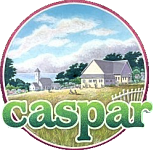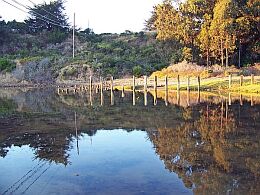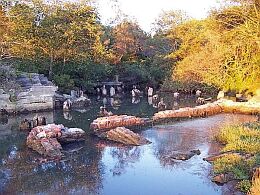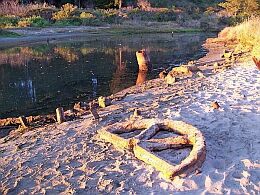|
"As a lumber company, it was large enough to last over 90 years in the business, but small enough to be owned
by one family. It was large enough to be a typical redwood lumbering operation, but small enough to be the subject
of a comprehensive photographic documentary. It was large enough to run a logging railroad with a variety of motive
power, but small enough to depend on water transportation to get the lumber to market.
As a town, Caspar was small enough to be taken in almost at a glance. Yet it was large enough to have a brick
building for the company store and office (one that survived the 1906 earthquake), and to have a church, its pastor
being the best-known minister on the coast. It was small enough to be hard to find on the map, but large enough to
be well known on the banks of the Ottawa River(a number of Canadians settled in Caspar).
And as a seaport it wasn't overlooked. It was smaller than a port like Fort Bragg, but larger than the usual
coastal landing. And Caspar ships usually had a home guard as the backbone of the crew. One of these crewmen
during the first decade of this century was Caspar Charlie Carlson. Captain Charles Carlson summed it all up
for me one evening during his last years: "Caspar meant so much to me in my memory that in later years as I ran up
and down the coast as a captain, I always blew the whistle when we passed the place, no matter what time of day
or night it was. I didn't care what anybody thought: that's just how I felt about it."

 The steamship Caspar being loaded from the headlands via the wire chute.
The steamship Caspar being loaded from the headlands via the wire chute.
Passengers embarked by the same means, riding in the "Pullman" visible at right.
Photo by Richard Tooker Collection
© National Maritime Museum
The March 1939 National Geographic celebrated the completion of the Golden
Gate bridge and the opening of the area of California north of the Golden Gate
to exploration by automobile. Prior to that time, roads into the area
were crude or non-existent, and most folks traveled by dog-hole schooner or, later, steamer.
|
|
 Caspar lumber mill around 1890
Caspar lumber mill around 1890
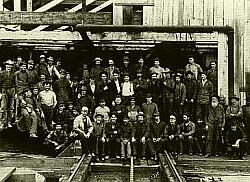 The mill crew in 1904
The mill crew in 1904
Photo by Miles Brothers
© National Maritime Museum
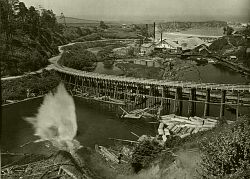 The Mill in 1938
The Mill in 1938
Photo by B. Anthony Stewart
© 1939 National Geographic Society
The "big splash" is the result of a log hitting the millpond after sliding down the chute.
|




